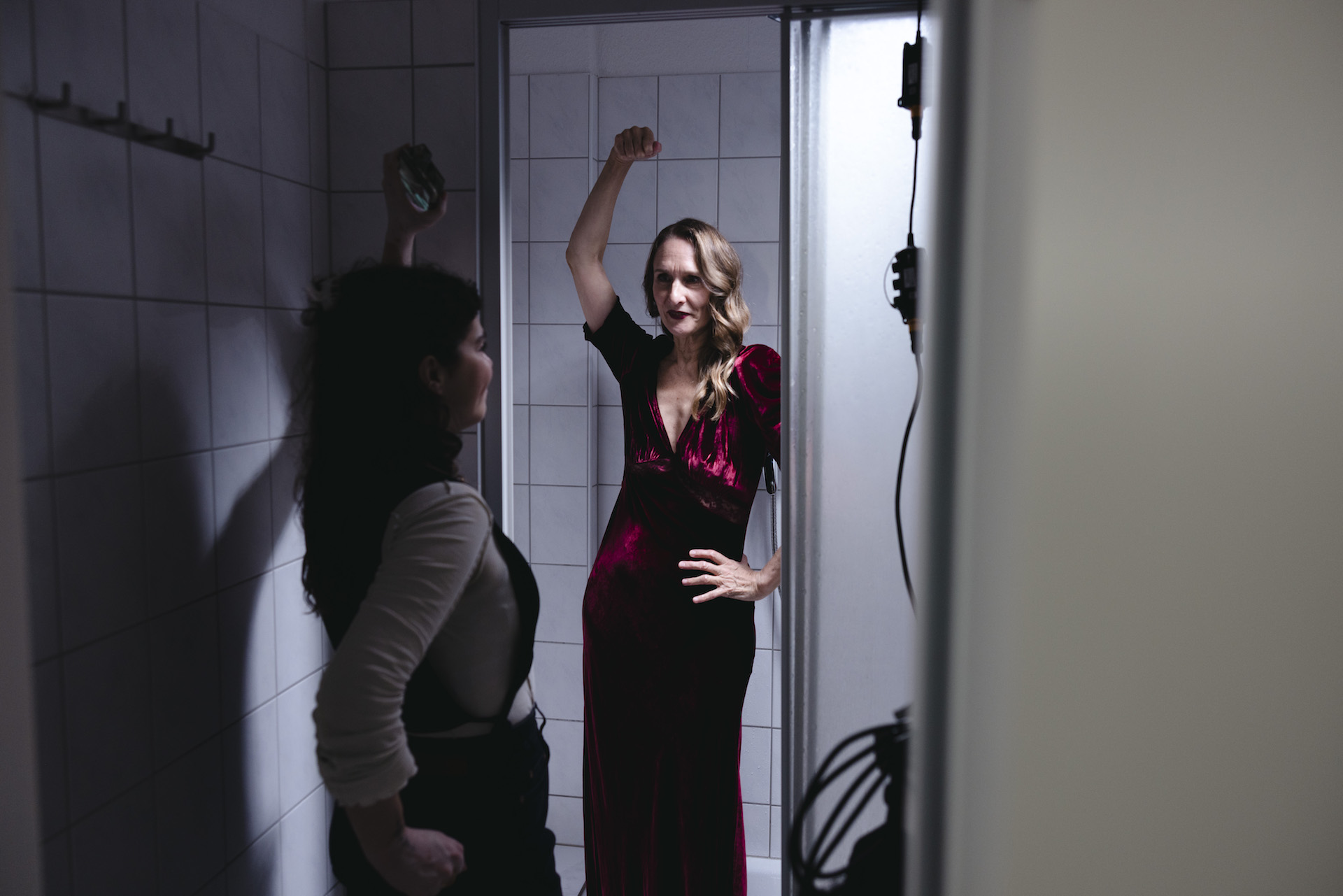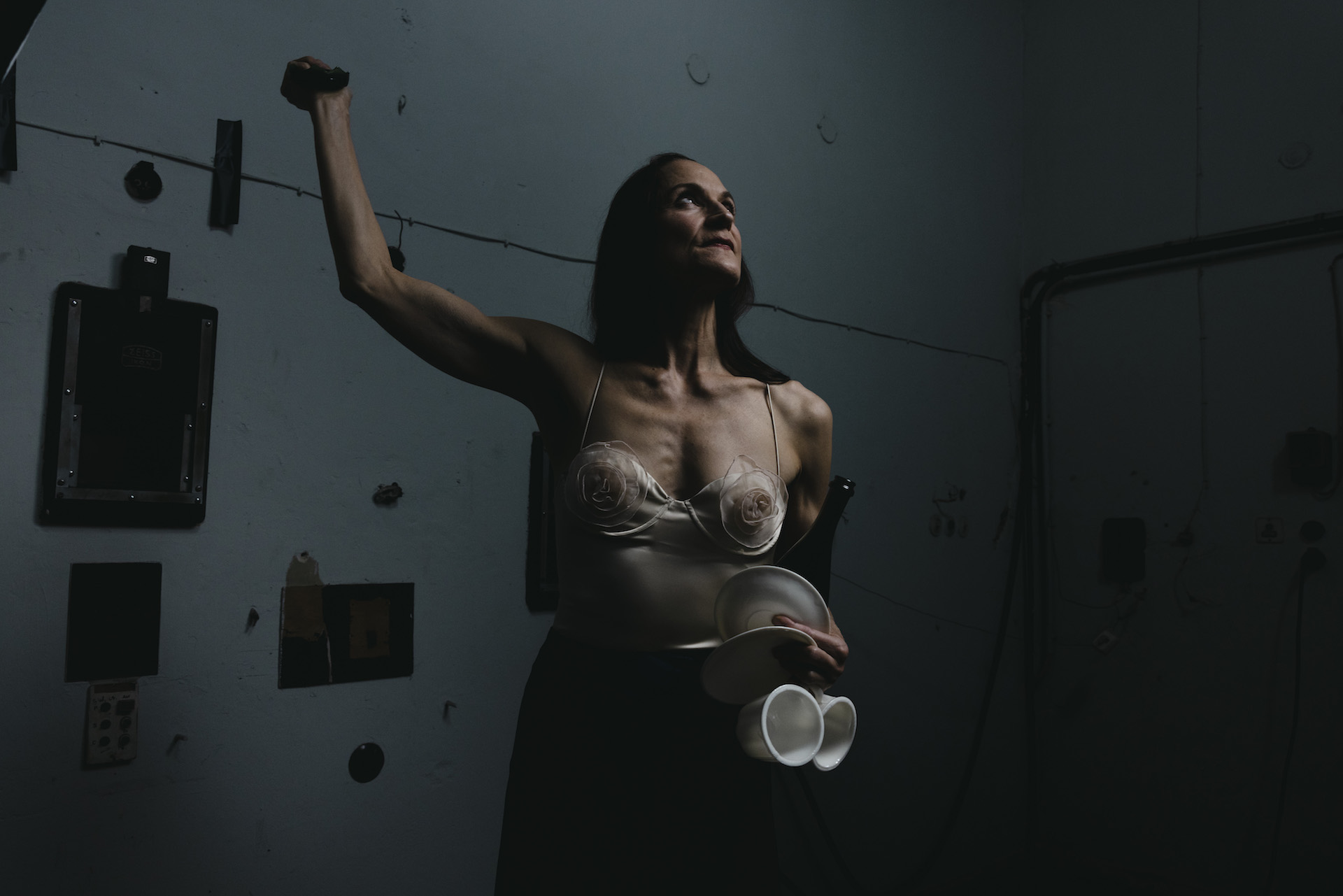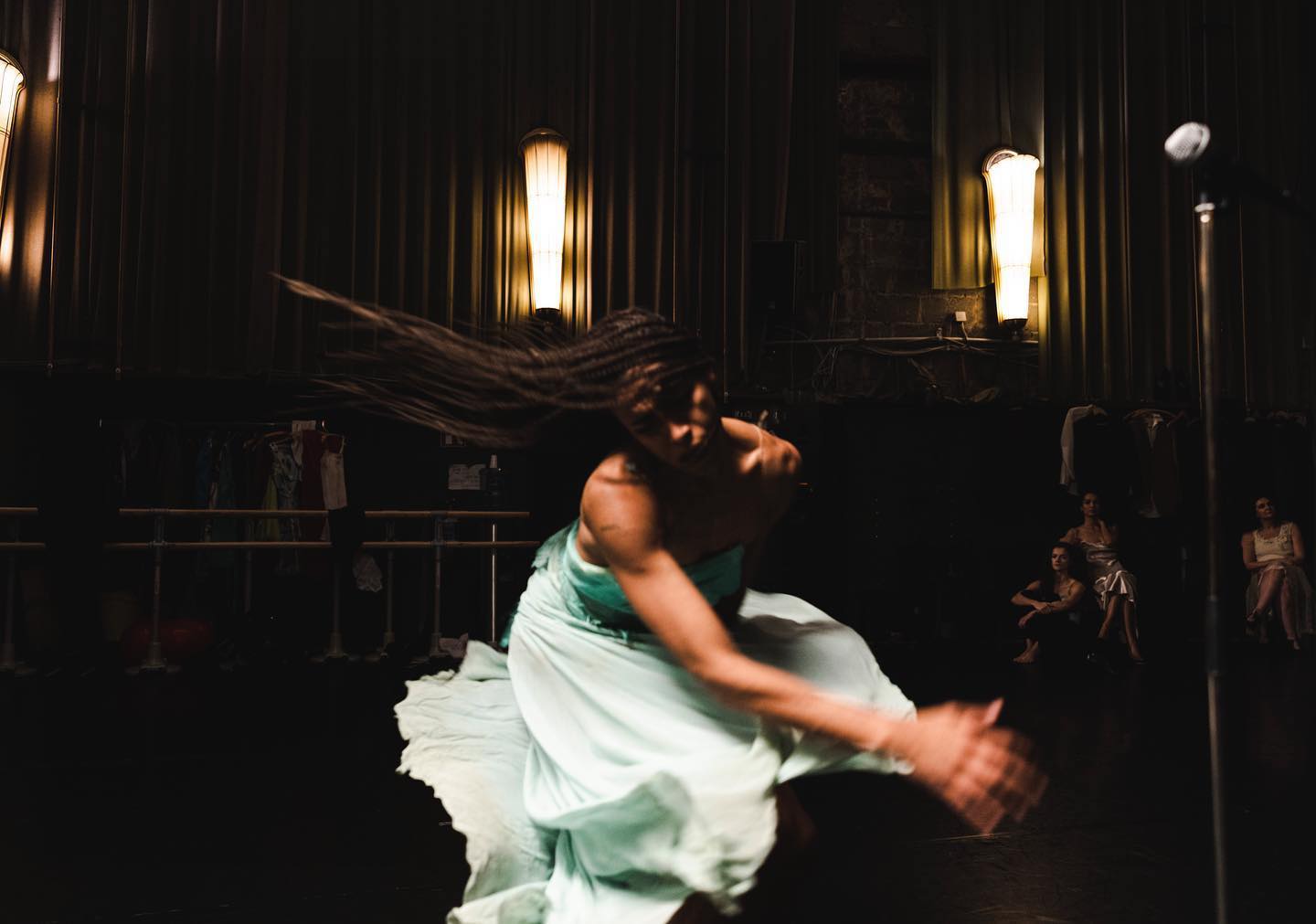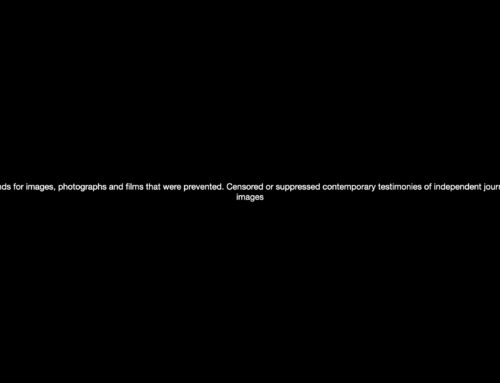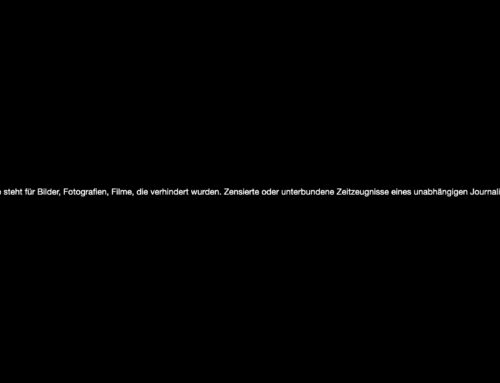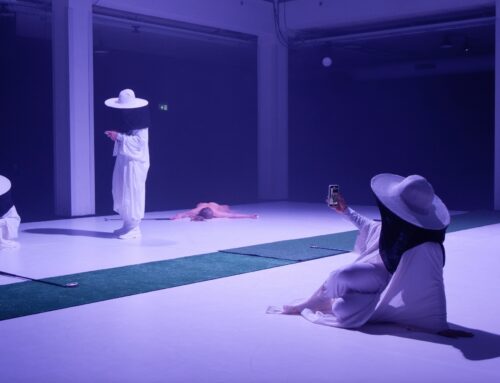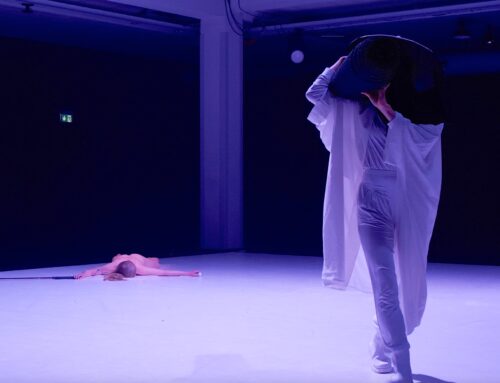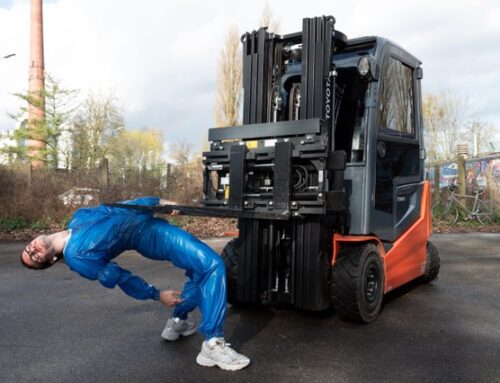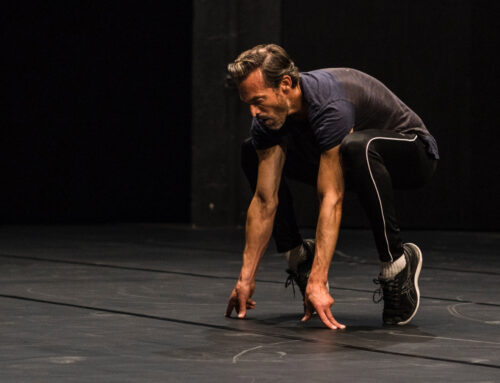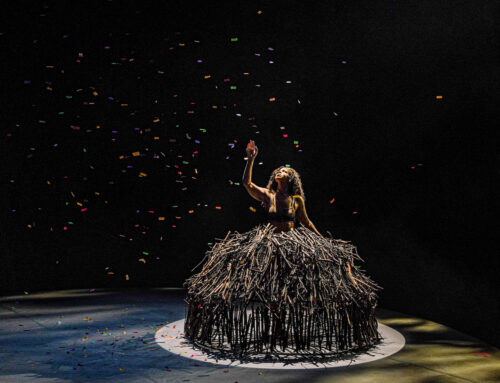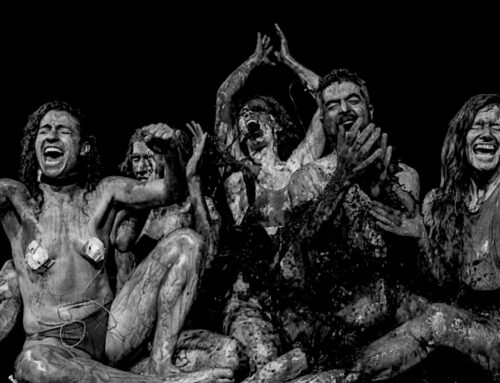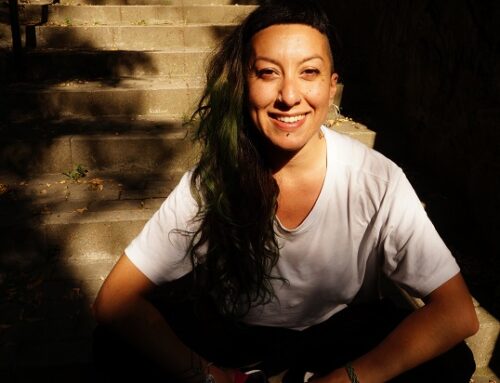Dance of agony
Overpretentious and underperforming: Samantha Shay’s dance film „Romance“ can’t decide whether it wants to be fiction or documentary. The result is sobering.
By: Harff-Peter Schönherr
Anyone who makes a film out of literature has to hope that the cinema-goer doesn’t know the original. If they do know it, there is a high probability that the camera shot will be at odds with the inner image that the text has created for them. If they do know it, they often react with scepticism when the film creates visual effects that do not correspond to the text. If he knows them, he usually does not forgive it when the film replaces the setting of the original story with its own. If they know it, they want to see the full complexity of the text on the screen, its atmosphere, characters and plot. This is a risk for the film.
Director Samantha Shay must have known this when she chose Miranda July’s short story „It Was Romance“ as the basis for her dance film „Romance“. It has since toured from festival to festival, with great success. But that doesn’t mean that the almost 40 minutes in which Shay uses July as a quarry make sense.
Sure, Shay tells the story in broad strokes along July’s emphatically anonymous „place of overflowing collaborative misery“, along the course of the oppressive, absurd self-awareness session to which July brings 40 women together on a Saturday morning „to become more romantic“.
But Shay relocates July’s events to the „Lichtburg“, a former, now rather old cinema, the legendary rehearsal studio of Pina Bausch’s Tanztheater Wuppertal. Members of the ensemble are her performers here, from Emily Castelli to Julie Shanahan, from Taylor Drury to Julie Anne Stanzak. And there is dancing, excessive dancing. It has nothing to do with July.
Shay uses some of the images that July creates. The participants also wear scarves in front of their eyes at the beginning to encourage introspection. An instructor (Julie Anne Stanzak) appears, looking like an army drill sergeant. It is dark in the room. Sandwiches are eaten during the break. Hands clench around your own ankles as if they were someone else’s, and then you run off as if you were someone else, someone you love, trying to escape.
But often July’s clear, hard, realistic sobriety is not enough for her. So she exaggerates. July ends up stacking chairs on top of each other before leaving; in Shay’s case, someone suggests burning them. Shay also constructs surrealisms: someone standing in the shower dressed and talking into a shower head? Someone stands in front of empty rows of chairs and talks to imaginary listeners? In moments like these, Julia’s template plays no role.
Shay takes it to the extreme. She adds her own images and text, often extensively, just like her actors, drawing on motifs from Pina Bausch’s choreographies. And her work always revolves around dance: „You got to dance with your soul!“, can be heard urgently, as if anyone had doubted that.
Of course, like July, Shay is concerned with inner turmoil and fears, with loneliness and the search for meaning, with self-doubt and the fear of losing one’s significance. But the way she tells this story does not justify her prominently appropriating the American multimedia artist, film director like herself, for herself.
A silver dolphin lighter comes into play, which does not light up for a long time. Crockery is smashed symbolically and ceremonially. Pomegranates are cut up like animal carcasses on a table, leaving behind a battlefield. None of this can be found in July.
Right at the beginning, after an incoherent, two-and-a-half-minute long pre-title dance sequence, we see an older woman (Julie Shanahan). She leans against the wall, kicks a chair. Says, to whomever: „You actually don’t belong here. I mean it! You have to go! It’s not okay that you’re here.“ Runs his hand over the wall, calling the place by its real name: Lichtburg. Tears open a window and, for whatever reason, shouts into the street: „You’re not listening!“
Then she starts smoking. „Actually, I don’t smoke,“ she says. „You don’t believe me, right? I don’t smoke! I actually hate it. I only do it for the stage!“ She says to the camera: „Don’t you dare look at me like that!“ She cries. Shows that it’s an act. Says you’re not a good actress just because you can cry. Pours coffee on the floor. He is so old and cold that he is also „on the ground“. She kneels down, wipes up without wiping. „It is so, so sad.“ Then she thanks whoever he is for coming: „I really appreciate it!“ She also talks about death. Then she laughs. What’s sad here? What is it all about? Nothing is clear. It certainly has nothing to do with July.
From scene to scene, it becomes more and more puzzling as to why Shay has recourse to July at all. July’s short story is clearly fiction. But what do we experience in „Romance“?
It’s not fiction. Some of it does seem like a plot. But we see the film crew with their 16 mm camera, we see the sound boom, the dubbing flap, and in between someone shouts: „Cut!“. That suggests a documentary. Although that can’t really be the case either, because then it would either be incredibly sloppily edited or very self-indulgent.
It cannot be a film documentary, the observation of a real ensemble situation of the Tanztheater Wuppertal, even if there is a lot of dancing, because at its core it is not about dance, but about the exhibition of all-round psychological deformation. If something real is indeed depicted, this suggests biographical work at best.
But „Romance“ is not biography work. For this, July’s text is performed too extensively, the protagonists are too often figures instead of people. Moreover, such collective despair, if it were even remotely real, would suggest that unsustainable conditions prevail in the Wuppertal company.
None of this, then. What we are confronted with is an extremely diffuse homage to dance, which is everything and therefore nothing. Whether the Wuppertal dancers, who have made themselves available to Shay, are doing themselves a favour is questionable.
Probably the most disturbing scene in „Romance“ is the one in which Naomi Brito (altogether too exaggerated), the first transgender dancer in the ensemble, reveals that she was raped at the age of five, almost every day. It sounds half authentic, because she speaks to a „Sam“, who also answers off camera, to a „Samantha“, and that looks like director Shay, so it’s not a role. At the same time, however, her narration seems so over-artificial, so staged, that Brito is certainly not speaking off the cuff here. Is she being herself here? Is she playing a role? We don’t know. That’s not productive.
It’s particularly irritating that Brito, the film’s main character so to speak, thanks „Sam“ in this scene for whatever. Does she do it of her own accord? Is it part of her role? In both cases, Shay constructs self-praise here by showing it.
What July says is crystal clear. What Shay tells remains enigmatic. And „Romance“ is not a puzzle that is fun to solve. In the end, all that remains is a disillusioned shake of the head.
Romance“ also gets a lot of things wrong technically. It is often spoken so quietly that nothing can be understood. Sometimes anything that deviates from the basic language of English is subtitled, sometimes not. Most of the time, English is not subtitled in English, but sometimes it is. Occasionally the voice-over doesn’t match the volume of the music; better mixing would have helped here. Sometimes the sound is missing for a few seconds. Sometimes two people talk at the same time, in two languages, plus music. Tricky.
The biggest problem, however, is the camera work. Yes, other literary film adaptations also rely on unsteady handheld camera shots. The series about the mysterious agent Jason Bourne, for example, which also deals with Robert Ludlum’s original rather freely. But the camera work in Bourne is well thought out, whereas in „Romance“ the shaking is simply annoying. Important things move out of the frame, unimportant and disturbing things move in. We also see blurred images time and time again, and they often don’t seem intentional.
Of course, some of the directorial ideas are good. For example, it seems as if the same role is played first by an old actress and then by a young one. And actors take up the gestures of other actors. But this subtlety falls flat. The viewer is too busy trying to decipher why the character Theresa from July’s short story in Shay’s film suddenly has the same name as her Wuppertal actress. Or why „Sam“, the director, is equated by Brito with the instructor, who is, after all, a role. Or why there are sometimes no film images to be seen, only colour fields. Or why July’s content only appears from minute 8 onwards, and even then only sporadically.
The film is short, but seems endless. Minute after minute passes with cryptic chatter. Minute after minute passes with dancing, which makes the confused story even more confused. If the film’s aim is to reach many people, it fails. If it is aimed at special interest connoisseurs who masochistically love to encounter the highest possible inhibition thresholds, who appreciate inaccessibility as a sign of particularly high artistry, particularly great depth of meaning, it does an excellent job.
Towards the end, someone says, very often: „Mistake!“ Yes, „Romance“ does indeed make mistakes. So it’s better to take a look at Miranda July’s short story collection „No one belongs here more than you“ instead; it’s one of the film’s props. Incidentally, July is only one of eight female authors under „Texts“ in the film credits. That’s just right.

